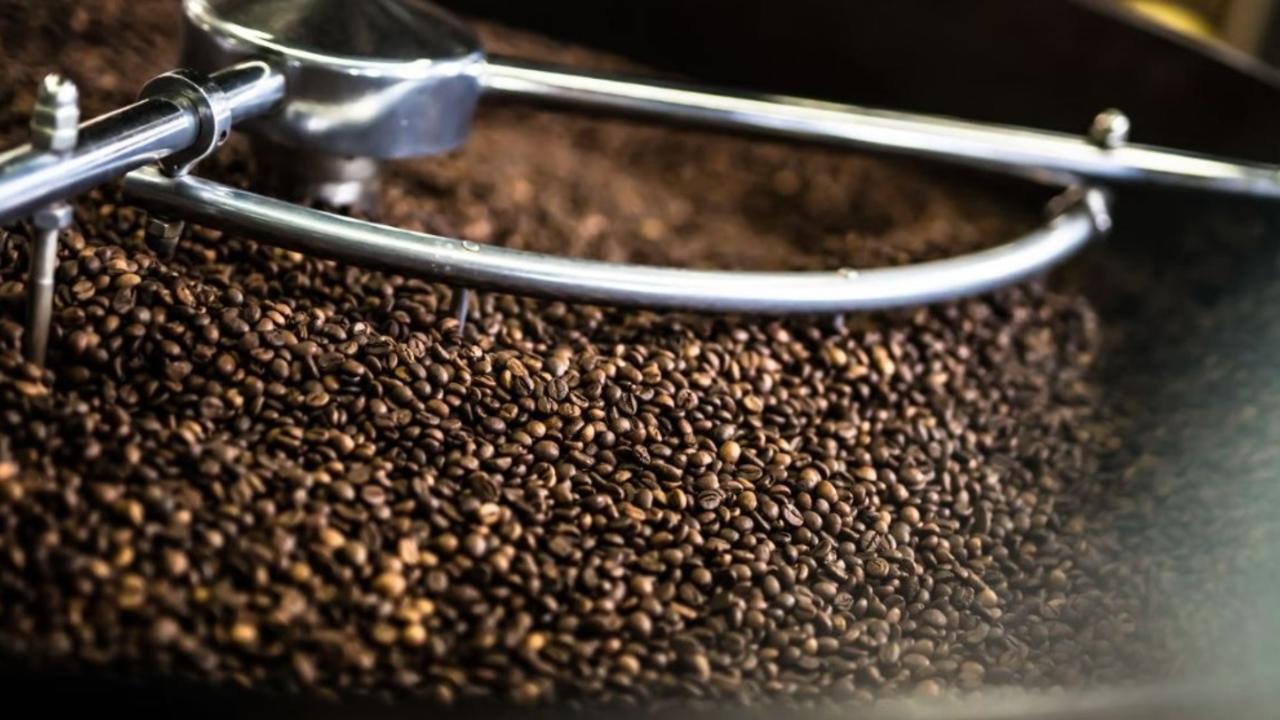Have you ever stared romantically into a great cup of coffee and wondered how it all works? Well, if you mean the universe, we can't help you out (sorry). But if you're talking about the rich deep flavour and aroma of coffee, then the answer is roasting!
Yes, coffee roasting is the reason your morning delight tastes so good. So, let us take you on a magical journey to discover how your bean is made fit for consumption and ends up in that coffee cup...
What is coffee roasting?

Coffee roasting is the process of transforming a raw, green coffee bean into a dark brown bean, ready to be used as coffee for different brewing methods, from drip coffee to a manual espresso machine. The roasting process ‘cooks’ the coffee beans, changing their form and developing the character. A raw coffee bean doesn’t have the same deep, aromatic characteristics as the roasted beans, so it’s extremely important to roast!
The coffee roasting process - 3 steps

Roasting coffee beans isn’t a particularly complicated or long process and only three coffee roasting stages are needed to make the change from green to brown. These are: drying, roasting and cooling.
1. Drying stage
Before anything can happen, the coffee beans need to be dried. Coffee beans have around 10% humidity, which all needs to be extracted before any roasting occurs. This drying stage will turn the coffee beans from green to yellow, as part of the reaction.
These beans are placed into a rotating roasting drum at 160⁰C and left for up to 8 minutes. This is enough time to dry out the coffee beans without burning them. Then, they move onto the main event, the roasting.
2. Roasting stage
The roasting stage is the principal part of the process, and the most important. The coffee beans will develop nearly all of their flavours, character and colour during the roasting. The roasting drum is now set between 200-230⁰C for up to 15 minutes and this is where the iconic coffee bean crack starts to occur.
It is at this point that something called the ‘Maillard reaction’ slowly occurs as the temperature rises. The Maillard reaction is when the sugars and amino acids in the coffee bean react together to make hundreds of new colour and aroma compounds (melanoids). It's from this reaction that the familiar smell and taste of the coffee bean are created.
Each type of coffee demands a slightly different process during roasting. Most often, altering the temperature and duration of the roast are the most common ways coffee roasters do this. Depending on the type of roast, a coffee bean may need more or less time roasting at a higher or lower temperature. Well-experienced coffee roasters will have worked out the perfect formula for their coffee beans, knowing them like the back of their hand!
There’s a lot of trial and error in roasting, so those who are impatient, may want to avoid becoming a coffee roaster.
3. Cooling stage
Cooling is the final stage for the coffee beans. The beans have been dried and roasted, turning them brown and packing them full with flavour. Coffee roasters now (rudely) interrupt the roasting stage to quickly bring the beans down to room temperature.
By quickly reducing the temperature of the coffee beans after roasting, the beans can store their all of their unique flavours. This part takes a maximum of five minutes.
Once cooled, that's it! The coffee beans are ready to be ground down and made into your favourite cup of coffee!
3 different levels of roasting

Everyone has their own coffee preferences. However, whether you like a latte or cappuccino isn’t up for consideration here, it's the way that the roasters roast coffee beans…
There are three different levels of roast that coffee beans are subjected to. Each type of roast affects how your coffee tastes, so coffee cupping after is essential for quality control. Everything from acidity, body and sweetness can be changed through small tweaks in the roasting method.
| Level of Roast | Acidity | Body | Sweetness |
|
Light Roast |
Crisp and light acidic taste |
Mellow body |
Very subtle sweetness |
|
Medium Roast |
Medium acidity and bitter taste |
Medium, balanced body |
Some hints of sweetness |
|
Dark Roast |
Very bitter taste |
Very full body |
More obvious sweetness |
Potential roasting problems

Unfortunately, roasting coffee isn’t a walk in the park. There may not be many steps, but coffee beans can be very temperamental, so roasting can easily 'go south' fast. Only a fully-trained coffee roaster knows how to avoid a bad roast and ruined bean. Here are the main problems that occur with a bad roast…
- A very intense bitter flavour, producing an undesirable and intensely sour coffee, like a sour espresso.
- Distortions in coffee bean shape, which affects roasting.
- Unevenly coloured grains, with some much lighter than others. This is due to harvesting immature coffee beans, unfit for roasting.
Learn how to become a barista and avoid these mistakes yourself!
How does the coffee bean change after roasting?

The coffee bean goes through a lot of changes during the whole roasting process. Most obviously, its colour turns from green to brown and it actually develops its own coffee flavour. The bean will also lose around 15-20% of its weight, whilst gaining 50-100% in volume. In terms of caffeine, this remains unvaried throughout the roasting process. The coffee bean can de decaffeinated after roasting without it affecting taste. Explore the decaf coffee benefits without compromising quality!
Feel like you could master the bean and the coffee machine? Learn more about our barista courses to start your coffee career today.

